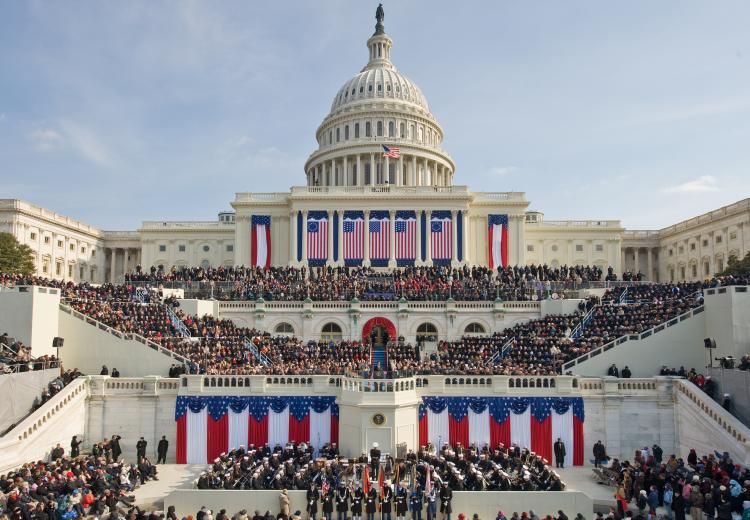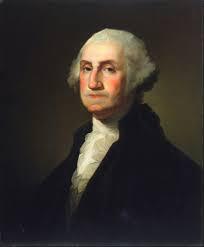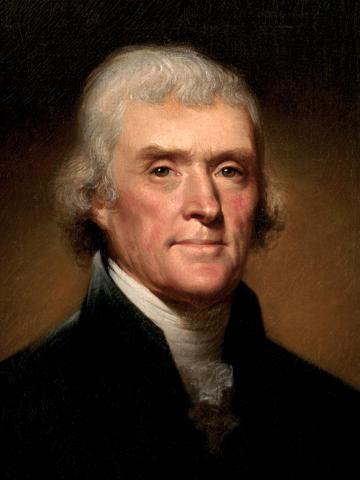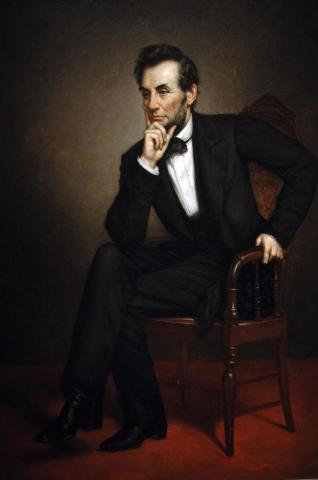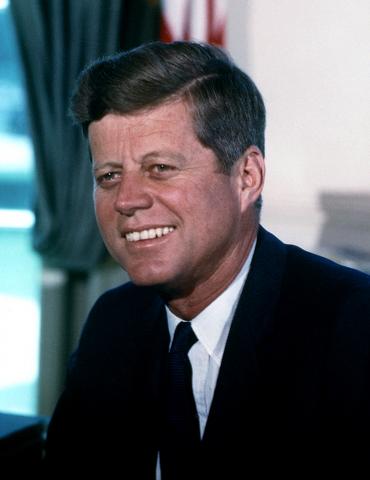The power and legacy of inaugural addresses comes from “their ability to isolate the transcendent issue of the day" in a way that resonates with most Americans. There is general consensus that the finest speeches are the first inaugural addresses of George Washington, Thomas Jefferson, Abraham Lincoln, Franklin D. Roosevelt, and John F. Kennedy.
George Washington
The presidential inauguration didn’t always take place in January. Until the 1930s, the inauguration was scheduled for March 4th (or the 5th, if the 4th fell on a Sunday). Students might be surprised to hear that the inauguration of George Washington was delayed until April 30, 1789, and that it was held in New York City, then the nation’s capital.
Setting the pattern for 19th-century inaugural speeches, Washington didn’t delve into policy matters but appealed to the basic principles of the Constitution that would govern his administration. Knowing how much was riding on this attempt at republican government, he insisted that “the sacred fire of liberty, and the destiny of the republican model of government, are justly considered as deeply, perhaps as finally staked, on the experiment entrusted to the hands of the American people."
Students can view a digital version of George Washington’s inaugural address of April 30, 1789 at the National Archives. EDSITEment has many lessons on George Washington, including how his presidency set the precedent for future occupants of this office. In George Washington : The Living Symbol, under Activity 4, there are a series of question to guide a close reading of the address. For informed analysis on George Washington and his presidency, you may wish to visit the EDSITEment-reviewed American President.
Thomas Jefferson
On March 4, 1801, Thomas Jefferson was the first president to take his oath of office in Washington D.C. After being elected in one of the nation's closest and most tumultuous contests, Jefferson sought to heal the breach between Federalist and Republican partisans and to restore unity to the country by reaching out to his political opponents. In a speech full of memorable lines, the most famous is: "every difference of opinion is not a difference of principle. We have called by different names brethren of the same principle. We are all republicans: we are all federalists.”
The third president presented his case not as an attempt to win support for a particular set of policies of his party, but rather as an effort to instruct the people in, and fortify their attachment to, true republican political principles. While his interpretation of fundamental republican principles in fact meshed with the policies of the Republican Party, his conciliatory rhetoric embraced both parties by narrating a single national story, one that the heroes of the Revolutionary generation would recognize and approve.
The form of inaugural address perfected by Jefferson proved a lasting model throughout the century. Subsquent addresses consistently attempted to show how the actions of the new administrations would conform to Constitutional and republican principles.
The address is available at the NEH-supported Papers of Thomas Jefferson, which includes a fascinating scholarly commentary on the changes Jefferson made to the text. EDSITEment’s curriculum unit The First American Party System: Events, Issues, and Positions covers the contest that led to Jefferson's election.
Abraham Lincoln
Both of President Abraham Lincoln’s inaugurations came at some of the darkest moments in U.S. history. In the four months that separated his election victory in November of 1860, and his first inauguration on March 4, 1861, seven southern states seceded from the Union, setting in motion the events that would lead to the Civil War.
The central theme of Lincoln's address is the preservation of the Union. Recognizing Southern anxieties about his intentions as president, he insisted that these anxieties were unfounded: he had no plan to interfere with slavery in the states where it existed. Having argued that the South has no just cause nor right to dissolve the Union, Lincoln argued that secession was "the essence of anarchy."
He concludes with two powerful paragraphs. In the first he put the responsibility for war squarely on the South
In your hands, my dissatisfied fellow-countrymen, and not in mine, is the momentous issue of civil war. The government will not assail you. You can have no conflict without being yourselves the aggressors. You have no oath registered in heaven to destroy the government, while I shall have the most solemn one to "preserve, protect, and defend it."
Yet, the concluding paragraph strikes a conciliatory tone and reaffirms Lincoln’s almost mystical faith in the Union:
I am loath to close. We are not enemies, but friends. We must not be enemies. Though passion may have strained, it must not break our bonds of affection. The mystic chords of memory, stretching from every battle-field and patriot grave to every living heart and hearthstone all over this broad land, will yet swell the chorus of the Union when again touched, as surely they will be, by the better angels of our nature
(A close reading of this speech for your classroom is available at The First Inaugural Address (1861)—Defending the American Union.)
Four years later, the war was nearing its completion and the Confederacy was in shambles. Lincoln adopted a humble approach when he stated the Administration's view of the war and the future of the Union. The newly re-elected president sought to unite the American people by interpreting the conflict as a divine judgment upon both sides of the war. Lincoln thought this required a common view of the wrong of slavery, as well as a common acceptance of the ravages of the Civil War as due punishment from the Almighty for the national exploitation of black slaves.
"Mr. Lincoln, that was a sacred effort." Frederick Douglass remarked soon after hearing this speech on March 4, 1865. The abolitionist orator, editor (and former slave) had met Lincoln only twice and for most of the war was a fierce critic of the president's policies. But he praised Lincoln's four-paragraph speech as sounding "more like a sermon than like a state paper."
For a close reading of Lincoln’s inaugural address, see EDSITEment's The First Inaugural Address (1861)—Defending the American Union, and The Second Inaugural Address (1865)—Restoring the American Union.
If you would like more information on the life and presidency of Abraham Lincoln you may wish to visit EDSITEment-reviewed American President.
Franklin Roosevelt
Abraham Lincoln was not the only president to preside over a great war; Woodrow Wilson was to do so in the second decade of the 20th century. But a greater crisis was faced by Franklin Roosevelt in peace time. In 1933, when he took office, the nation had already endured more than three years of economic depression. Roosevelt set about to prepare the country to accept an extraordinary expansion of federal power.
Roosevelt recognized that the programs he was about to introduce for congressional legislative action were unprecedented in peace time. In his address, he underscored the adaptability of the Constitution to meet the crises of modern industrial society. For a close reading of the speech, see the National Archives Teaching with Documents: FDR’s First Inaugural Address Declaring War on the Great Depression. The Gilder Lehrman Institute recently posted Franklin D. Roosevelt's First Inaugural Address: A Common Core Unit.
John F. Kennedy
John F. Kennedy’s speech in 1961 is famous for its eloquence and for its call to duty: "Ask not what your country can do for you—ask what you can do for your country.” The young president spoke to the nation after a close, divisive election and at a time when the American people were growing increasingly fearful of a long, drawn-out cold war.
Yet instead of reassuring his audience by minimizing the dangers, Kennedy warned of a long, difficult struggle, emphasized differences between the United States and its enemies and outlined the specific responsibilities and obligations of the United States and its citizens. For a close reading of the speech see John F. Kennedy, “Inaugural Address,” January 20, 1961.
